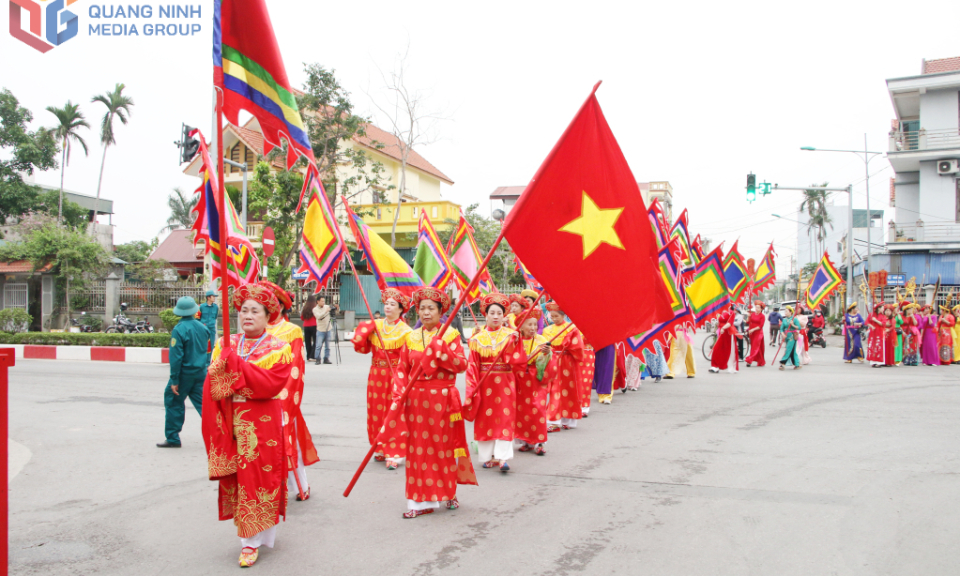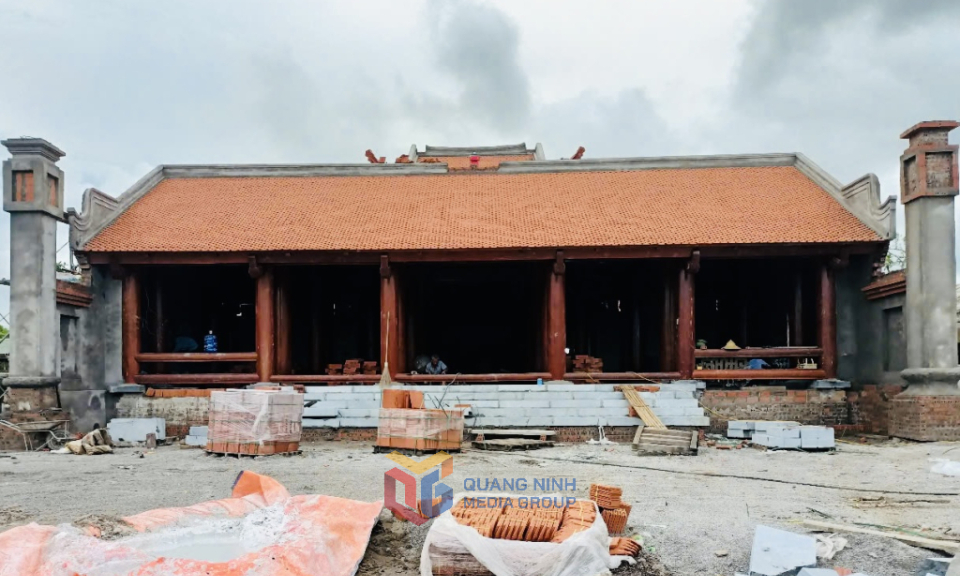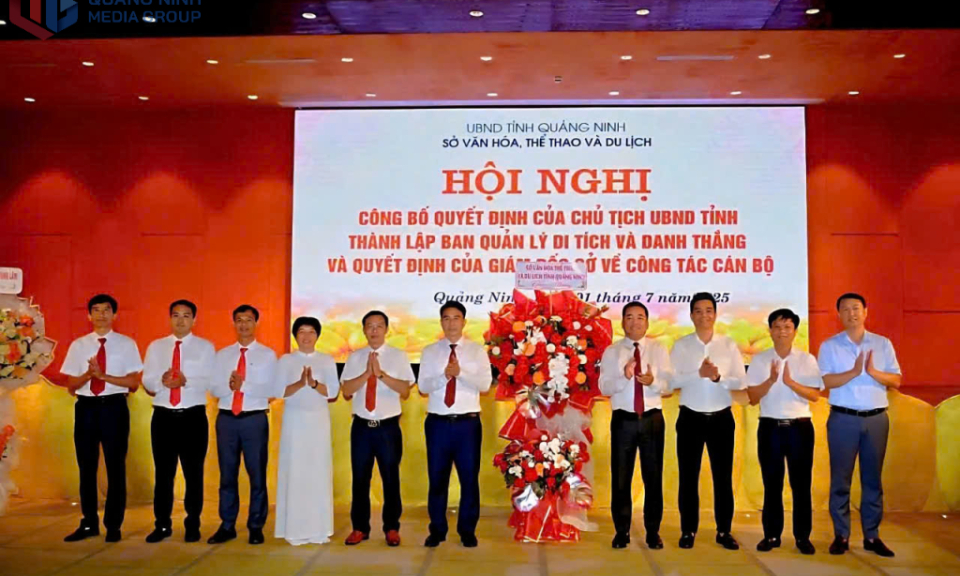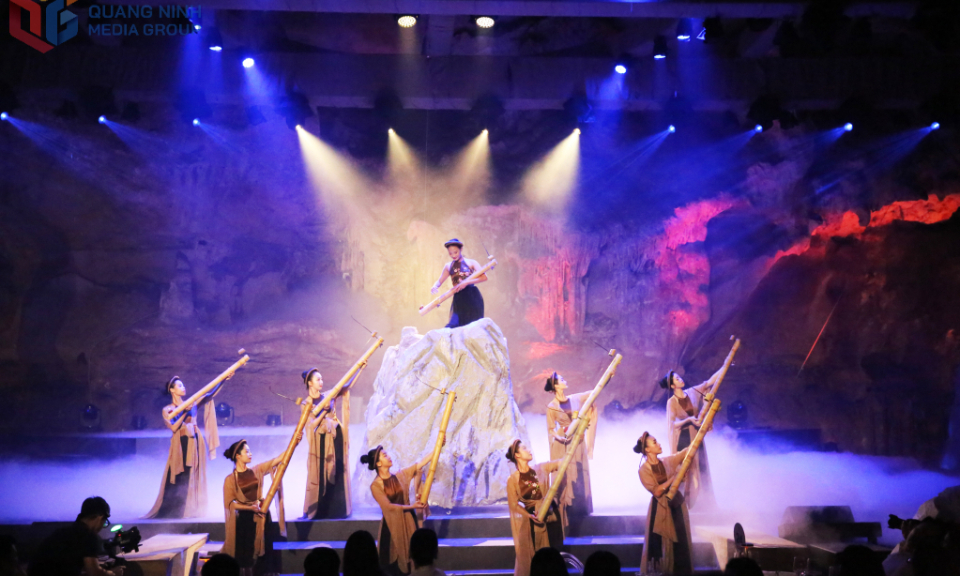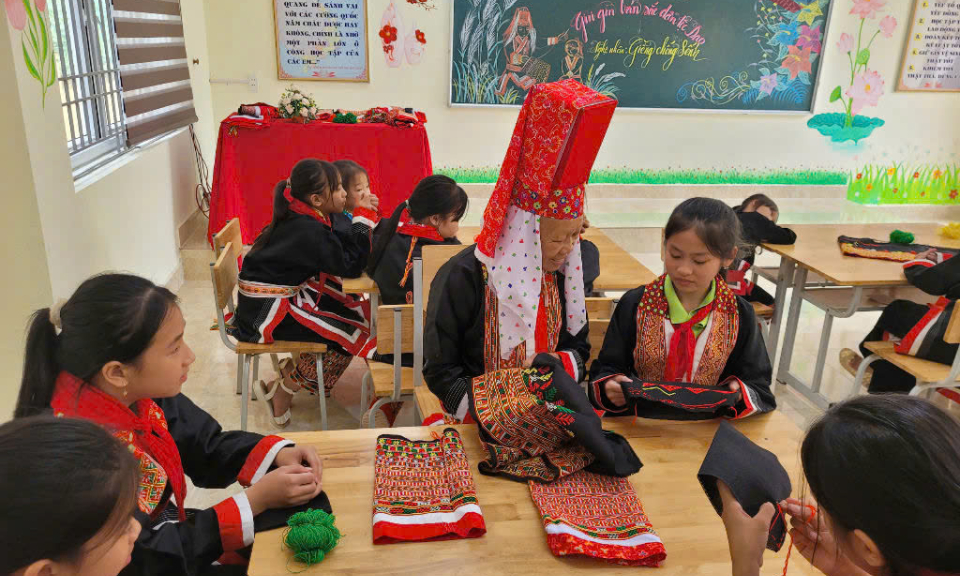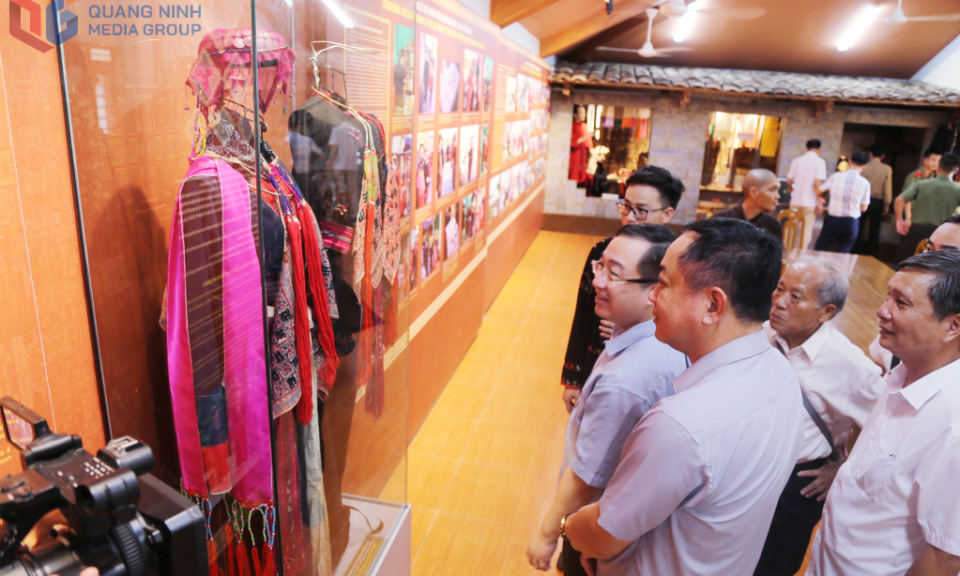Experiencing conical hat making in Yen Tu
Making conical hats is a kind of hand-on experience that visitors to Yen Tu Pilgrim Village should try.
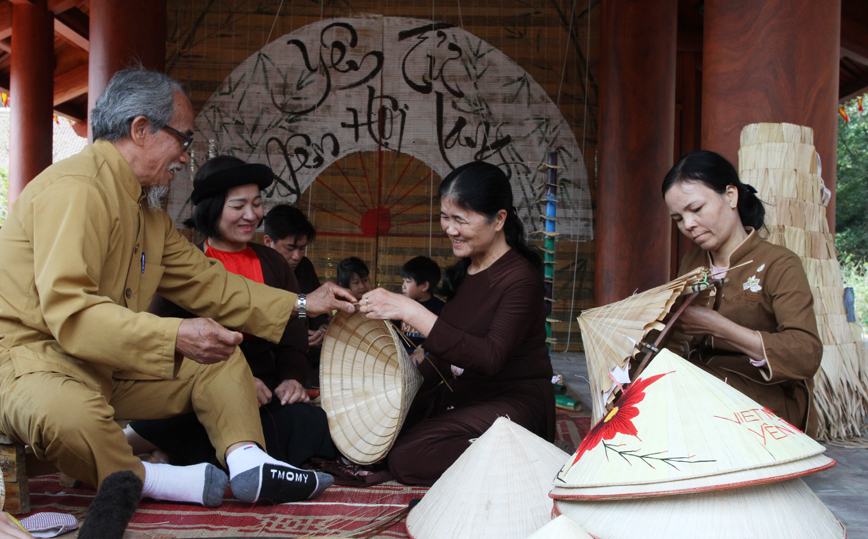 |
| Artisan Pham Thanh Luong instructs tourists on how to make a conical hat |
Conical hats have been existed in Vietnamese people’s daily life for long. No one knows for sure when conical hat making was born. In Vietnam, there are conical hat making villages, for example, Chuong Village (Thanh Oai, Ha Noi), Truong Giang Village (Nong Cong, Thanh Hoa), Phu Vang Village (Thua Thien Hue), Go Vang Village (Binh Dinh), Que Minh and Que Son Villages (Quang Nam)
The image of conical hats appears on the surface of Dong Son and Ngoc Lu Bronze Drums and Dao Thinh Bronze Jar. In history, Ma Loi conical hats linked with General Tran Khanh Du’s life and career in Van Don Trading Port.
As Mongolian invaders sent their spies to Vietnam via trading activities, General Tran Khanh Du required all locals to wear Ma Loi conical hats and not use foreign hats. Therefore, conical hats were the most sought items by people living not only in Van Don but also in other parts of Vietnam, thus boosting conical hat making at Ma Loi Village in Hong Lo (Hai Duong province now).
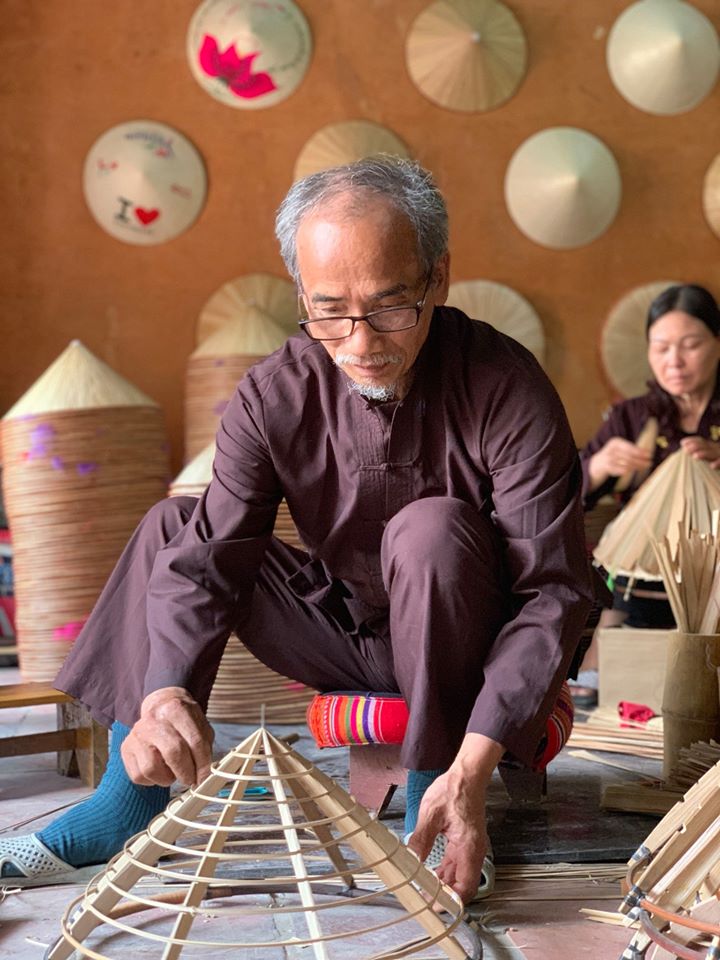 |
| Making a frame for a conical hat |
According to Artisan Pham Thanh Luong in Thuong Yen Cong Commune, Uong Bi City, there are three basic stages to make a conical hat. First, the artisan prepares bamboo to make a frame, dried palm leaves, scissors, needle and thread, and elastic band. Next, the artisan makes a conical shape for the hat, including forming the shape, wrapping the frame with dried palm leaves, sewing. Then, the artisan put final touches on the hat by sewing decorative printed patterns or painting. Conical hats made in Yen Tu are decorated with patterns or words relating to King Tran Nhan Tong or Truc Lam Yen Tu Zen sect, a unique souvenir for tourists.
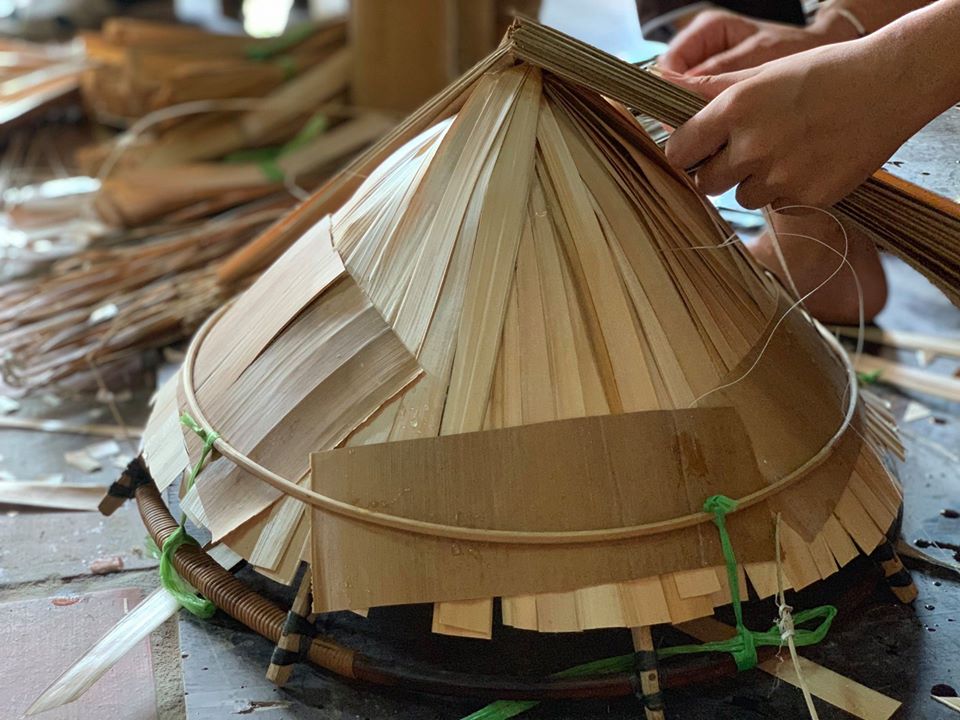 |
| The hat is nice or not, depending on the maker's skills |
Introducing conical hat making in Yen Tu Pilgrim Village is not only creating a new tourism product but also preserving national cultural values.
Translated by Quynh Trang

